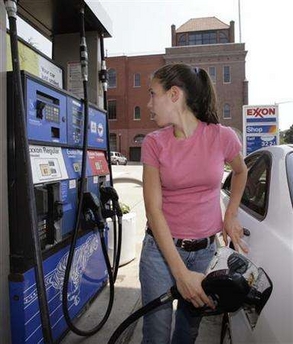What price for gasoline is the magic number to reduce automobile dominance?

A woman fills up her vehicle in a file photo. REUTERS/Yuri Gripas.
The London Daily Telegraph reports, in "Britons turning back on car ownership as cost of motoring soars," that car ownership is down significantly in Britain. From the article:
The most dramatic drop was in the number of new cars registered which fell by 6.8 per cent in 2009 compared with the previous year.
This was despite the Government's "cash for bangers" scheme, which saw anyone trading in a 10-year old car receiving a £2,000 grant towards a new model.
Instead thousands of motorists, who have given up their own vehicle, have joined "car clubs", with the number of members nearly doubling from 64,679 to 112,928 over the past 12 months.
Those who did venture into the market to buy new cars also traded down, with average engine size falling by 3.6% to 1,692cc last year.
Concern over pump prices saw the number of electric and hybrid cars on Britain's road increase from 48,000 in 2008 to 62,000 last year.
The price of gas there is about $6/gallon. Maybe that's the magic price point. But in the U.S., it would be a wrenching process of transition. Not a problem for people who live in more urbanized, connected areas, but a major problem for everyone else.These days I am working in a suburban county as a bicycle and pedestrian planner. The county is 640 square miles, and the distance between town centers can be quite significant, 10-20 miles or more depending on where you are and where you want or have to go. The options for doing that by transit are quite limited at present, and even so, transit works best for short trips (5-7 miles) or point-to-point trips of longer distances but with a relatively limited number of stops.
Of course, there's the bike, and I think electric bikes might be a good way for people to agree to bicycle longer distances than they would ordinarily consider.
But the bike as a mode of transport isn't ready to replace tens of thousands of daily trips.
In Baltimore County, Maryland, the average day sees more than 22 million miles of vehicle travel within the county...
Labels: transportation planning



0 Comments:
Post a Comment
<< Home